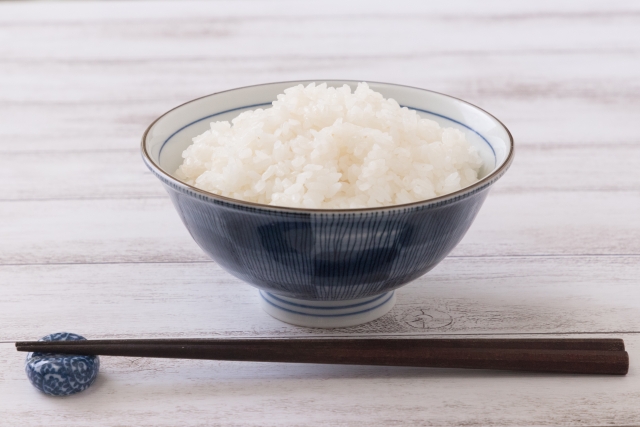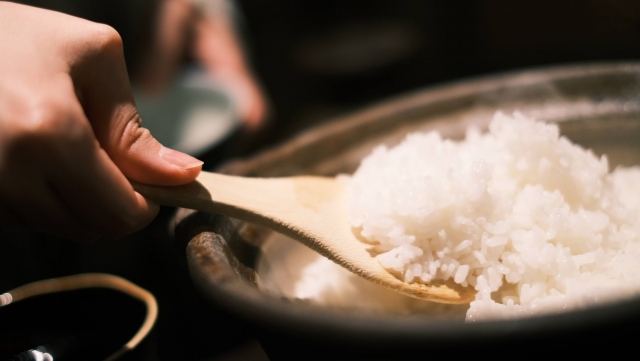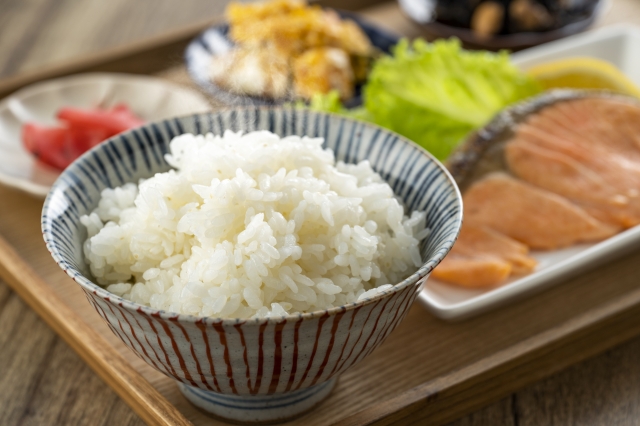In Japan, the cultural significance of food extends well beyond nutrition, and no food item showcases this better than Shiro-gohan (白ご飯), or white rice.
This simple, humble food is deeply woven into the country’s culinary and cultural fabric.
Understanding Shiro-gohan

In its simplest form, Shiro-gohan refers to white rice that has been polished to remove the bran and cooked to a fluffy consistency.
This versatile staple is integral to Japanese meals and is steeped in historical and cultural importance.
The Historical and Cultural Significance
Rice cultivation in Japan dates back over 2,000 years, shaping the nation’s landscapes, society, and spiritual beliefs.
- Rice and Religion: In Shinto, Japan’s native religion, rice is considered a divine gift, used in various ceremonies, offerings, and rituals.
- Rice and Society: Rice farming dictated the feudal societal structure of ancient Japan, influencing everything from local governance to tax systems.
- Rice and Language: The Japanese word for cooked rice, “gohan,” also translates to “meal,” underlining rice’s centrality in Japanese cuisine.
How to enjoying
Shiro-gohan’s culinary versatility allows it to be served in various ways, forming the backbone of a multitude of dishes.
| Method | Description |
|---|---|
| As a standalone dish | Simply cooked and served in a bowl, providing a neutral accompaniment to other dishes. |
| In Onigiri | Rice is molded into triangular or cylindrical shapes and often wrapped in nori (seaweed). |
| In Sushi | The rice is seasoned with vinegar and used as a base for different types of sushi. |
| In Donburi | Served under various toppings like fish, meat, or vegetables in a bowl. |
Etiquette when eating
As with many aspects of Japanese culture, there are certain etiquette rules associated with eating rice.
- Don’t Waste: It’s considered important to finish every grain of rice to show appreciation for the labor that went into its cultivation.
- Serving and Eating: Rice is traditionally served in individual bowls. Instead of mixing it with other dishes, it’s eaten separately to enjoy its distinct flavor.
- Soy Sauce Etiquette: Pouring soy sauce directly onto white rice is frowned upon. It’s seen as a disrespect to both the rice and the soy sauce.
Preparation and Cooking of Shiro-gohan

Cooking Shiro-gohan is an art in itself. Here is a step-by-step guide to preparing this quintessential Japanese dish.
STEP1: Measuring
Japanese rice is usually sold in “gō” units, where 1 gō is about 150g, enough for one person. Measure the amount of rice needed depending on the number of servings.
STEP2: Washing
Rice is washed to remove any dirt and excess starch. Place the rice in a bowl, cover with cold water, gently stir and drain. Repeat this process until the water is clear.
STEP3: Soaking
Soak the rice in clean water for about 30 minutes. This step is essential for achieving the perfect texture.
STEP4: Cooking
The rice can now be cooked. Japanese rice cookers are prevalent and do an excellent job, but it can also be cooked in a pot over the stove.
FAQs on Shiro-gohan

Frequently asked questions about white rice are answered.
Q1: Is it true that Japanese people eat rice at every meal?
A1: While it’s not uncommon, it varies by individual and household. Some may have it at every meal, while others might have it once or twice a day.
Q2: Why is rice so important in Japan?
A2: Rice has a deep-rooted historical and cultural significance in Japan, influencing societal structure, language, and traditions. Its versatility also makes it a key component of many dishes.
Q3: Is Japanese rice different from other rice?
A3: Yes, Japanese rice, often referred to as Japonica rice, is short-grain and becomes sticky when cooked, which is different from long-grain varieties common in other cuisines.
Conclusion
In summary, Shiro-gohan is much more than a staple food in Japan.
Its historical significance, versatility, and centrality in daily life make it a powerful symbol of Japanese culture.
Whether enjoyed plain, in a sushi roll, or as part of a traditional meal, Shiro-gohan embodies the harmony, balance, and respect for nature that is at the heart of Japanese society.



comment